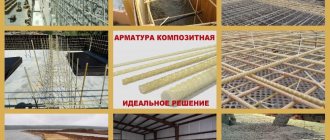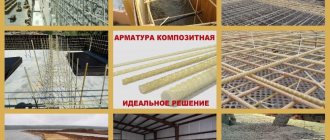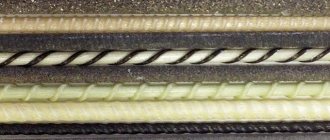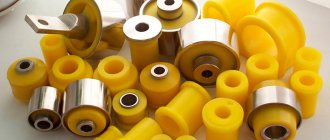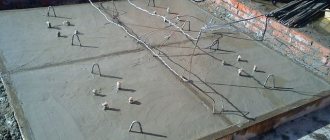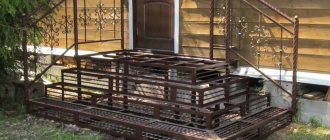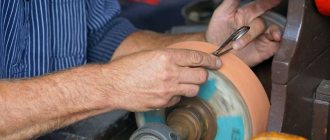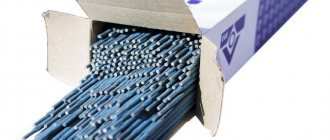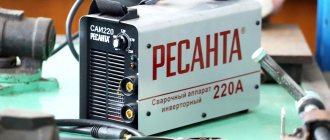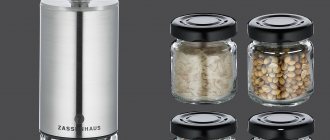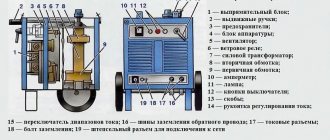Fiberglass reinforcement, which appeared on the construction market relatively recently, has both advantages and disadvantages, which the consumer must be aware of. Despite the assurances of manufacturers that this product is a complete replacement for metal fittings, its use cannot be considered justified in all situations.
Frame of a monolithic slab made of composite reinforcement
Foundation slabs
The technology of reinforcing foundation slabs for low-rise construction of no more than three floors using fiberglass composite reinforcement occurs by replacing metal reinforcement with fiberglass according to the table of equal strength replacement.
Correct replacement with fiberglass reinforcement is guaranteed to lead to significant savings in money, because Fiberglass reinforcement is cheaper than metal. The principle of reinforcing foundation slabs with fiberglass reinforcement does not differ from reinforcement with metal reinforcement, but leads to significant savings in installation time.
When replacing metal reinforcement with fiberglass reinforcement, there is no need to reduce the reinforcement pitch.
If it is necessary to lengthen the fiberglass reinforcement rod, the connection occurs in an overlap. The length of the overlap is from 20 to 50 cm.
Knitting of fiberglass reinforcement is carried out with a knitting wire, cutting of fiberglass reinforcement is carried out with a grinder - a grinder.
How to avoid problems?
The main problems associated with the use of glass fiber rods are poor quality/defective material and poor engineering design calculations. Problems can arise in the construction of a house if the characteristics of the fiberglass reinforcement used are not taken into account.
Accurate calculations, careful execution of work, and strict adherence to the manufacturer’s recommendations for the selection and installation of materials will help you avoid problems during and after construction.
It is possible to check the quality of a product before purchasing only visually. To do this, you should pay attention to the following points.
- Manufacturer. If the product is not purchased from a factory, you must request documentation for the product confirming its quality and factory (not artisanal) type of production.
- Color. Uniform color throughout the entire bar indicates quality. An unevenly colored product means that the production technology was violated. Brown color indicates the substance is burning out.
- Green indicates insufficient heat treatment.
The use of fiberglass reinforcement in some cases is advisable instead of metal reinforcement. Sometimes it is permissible to combine metal and fiberglass rods when constructing one structure. In order not to later regret using AKS, you should carefully carry out calculations of future buildings at the design stage. Composite reinforcement is selected similarly to steel, taking into account key parameters: bending strength, tensile strength, etc.
The possibility of using fiberglass rods is assessed based on the mobility and type of soil, fire safety requirements, longitudinal and lateral loads that will affect the structure. For example, on swampy and mobile soils, metal reinforcement is used for reinforcement. Fiberglass reinforcement will simply be broken by ground movements due to its low fracture strength.
Strip foundations
Reinforcement of a strip foundation using fiberglass reinforcement occurs by replacing metal reinforcement with fiberglass reinforcement according to the equal-strength replacement table.
Table of equal replacement of metal reinforcement with composite fiberglass reinforcement
| Metal class A-III (A400C) | Composite polymer fiberglass reinforcement OZKM (AKS) |
| 6 A-III | 4 AKS |
| 8 A-III | 5.5 AKS |
| 10 A-III | 6 AKS |
| 12 A-III | 8 AKS |
| 14 A-III | 10 AKS |
| 16 A-III | 12 AKS |
| 18 A-III | 14 AKS |
| 20 A-III | 16 AKS |
Correct, equal-strength replacement of metal reinforcement with fiberglass will allow you to receive economic benefits of up to 45%
(savings 2 times).
When replacing metal reinforcement with fiberglass, there is no need to increase the number of layers of reinforcement and the number of rods in one layer.
If it is necessary to lengthen the fiberglass reinforcement rod, the connection occurs in an overlap. The length of the overlap is from 20 to 50 cm.
Knitting of fiberglass reinforcement is also carried out using a knitting wire; cutting of fiberglass reinforcement is carried out with a “grinder”.
Fiberglass reinforcement in Moscow
In addition, due to the fact that fiberglass does not react to an aggressive environment, the reinforcement therefore protects concrete from premature destruction, thereby increasing the service life of the object. Fiberglass reinforcement reacts to temperature changes similarly to concrete, which also has a good effect on the strength of the structure.
The strength of fiberglass compared to metal is 2.5 times higher. At the same time, the thermal conductivity index is 100 times lower than the thermal conductivity index of steel. Therefore, a structure that is reinforced with fiberglass does not freeze (does not form “cold bridges”) and a building built using fiberglass will be warmer than a building based on metal reinforcement. This allows you to reduce heating costs, and therefore the material is actively used in the construction of modern energy-efficient buildings.
Another undeniable advantage that may be of interest to builders is the fact that fiberglass is a surprisingly durable material, which for 100 years after installation does not require additional repair work. This is what fiberglass reinforcement for foundations is famous for.
Fiberglass reinforcement has found its application in many areas of industry, construction, and public utilities:
- in construction, it is used in the construction of civil and industrial construction projects as a basis for foundations, floors, beams, as well as in the construction of earthquake-resistant belts;
- In the construction and repair of roads, reinforcement is used in the construction of embankments, road surfaces, in the construction of bridges and highway barriers. It is resistant to the effects of reagents that are applied to road surfaces (for example, de-icing reagents), so it can be used both in Moscow and in colder regions.
Fiberglass reinforcement will be an ideal basis for concrete and brick structures. It is used in the creation of supports for power lines and lighting, in the construction of road, sidewalk and fence slabs, as well as in the installation of sleepers on railway tracks. Reinforcement for floors, where a mesh of reinforcement is used, even together with metal, has become widely used.
Fiberglass is used in building structures such as monolithic foundations and foam concrete. It is also actively used in the creation of structures that must have increased resistance to chemicals, for example:
- during the construction of storage facilities for chemical waste and components;
- when installing sewerage systems, water pipelines, land reclamation systems;
- during the construction of port facilities and during the strengthening of coastlines.
Despite the uniqueness of the product, fiberglass reinforcement, the price in Moscow for which is indicated on our website, is an affordable material for both construction organizations and individuals. Its cost is 40-50% lower than the cost of steel reinforcement, which allows you to significantly reduce costs and at the same time improve the quality of constructed objects. In general, composite reinforcement can be called one of the most reliable and efficient building materials of our time.
Reinforcement of industrial concrete floors
Reinforcement of industrial concrete floors using fiberglass composite reinforcement occurs by replacing metal reinforcement with fiberglass reinforcement according to the equal-strength replacement table.
Correct replacement of fiberglass reinforcement when reinforcing industrial concrete floors also leads to significant savings in money, because Fiberglass reinforcement is cheaper than metal.
The principle of reinforcement with fiberglass reinforcement does not differ from reinforcement with metal reinforcement, but leads to significant savings in installation time.
When replacing metal reinforcement with fiberglass reinforcement, there is no need to reduce the reinforcement pitch.
If it is necessary to lengthen the fiberglass reinforcement rod, the connection occurs in an overlap. The length of the overlap is from 20 to 50 cm.
Knitting of fiberglass reinforcement is carried out with a knitting wire, cutting of fiberglass reinforcement is carried out with a grinder - a grinder.
Strengthening foundation structures.
When used to reinforce strip and other types of fiberglass foundations, rods with a diameter of 8 mm are used, which is equivalent to the use of 12 mm steel reinforcement.
Fiberglass reinforcement properties application.
Calculations for replacing steel reinforcement with fiberglass.
It is not difficult to carry out the procedure for such reinforcement with your own hands, if you adhere to the following algorithm.
- When installing the formwork, it is recommended to wrap its elements with parchment, which will allow them to be reused.
- On the inside of the formwork elements, using a horizontal level, mark the line up to which the concrete solution will be poured. This procedure will allow the concrete solution to be more evenly distributed throughout the entire internal volume of the future strip or any other foundation.
- The reinforcement elements with which you will strengthen your foundation must be covered with a layer of mortar at least 5 cm thick. In order to maintain this distance, you can use ordinary bricks that are laid on the bottom of the future foundation.
- Two rows of reinforcement are placed on the bricks laid at the bottom of the future foundation. In this case, it is desirable that solid rods be used, without joints. By measuring the length of the sides of the foundation being poured, you can easily determine how long the rod you will need to unwind and cut from the overall coil.
- After laying the longitudinal reinforcement bars, it is necessary to attach transverse jumpers to them, which are fixed with plastic clamps.
- Then you need to make the upper level of the reinforcement cage, which should be identical to the lower one. Both levels of such a frame, the cell dimensions of which should be approximately 150 mm, are connected using vertical jumpers.
- After making the reinforcement frame, they begin pouring the concrete solution. It is up to you to decide what concrete mixture will be used for this, but preference is most often given to the M400 brand solution.
Fiberglass reinforcement, application features.
Reinforcement of the foundation belt with fiberglass reinforcement.
Fiberglass reinforcement used in construction.
To quickly and continuously pour the foundation, it is better to use the services of a mixer
It is not difficult to calculate how much mortar you will need to fill the foundation: to do this, you need to calculate the perimeter of the future foundation, and then multiply the result by its width and depth. When pouring concrete mortar with your own hands, it is important not to forget that it must be compacted periodically so that air bubbles do not form in the foundation mass.
It will take 2-3 weeks for the poured concrete solution to completely harden. During this period, the poured foundation must be covered with a film from rain, and if the weather is hot outside, its surface must be periodically moistened with water.
Reinforcement made from fiberglass is a relatively new material on the domestic construction market that has not yet stood the test of time. Therefore, when using such material to reinforce concrete structures, you must understand the extent of responsibility for your choice.
Blind areas around buildings
A blind area is a strip with a width of 0.6 m to 1.2 m, which is adjacent to the foundation or base of a building with a slope.
The slope of the blind area must be at least 1% (1 cm per 1 m) and no more than 10% (10 cm per 1 m).
It is recommended to construct a blind area around the building using fiberglass reinforcement, since the main task of the blind area is to drain surface rain and melt water from the walls and foundation of the house. A blind area using fiberglass reinforcement will last several times longer, since fiberglass reinforcement has high anti-corrosion properties, which prevents the occurrence of cracks in concrete.
Performing calculations of the quantity of bar reinforcement
Expert opinion Vitaly Kudryashov builder, aspiring author
Ask a Question
Please note: The amount of reinforcement required to strengthen a concrete foundation monolith is calculated according to the same principle - as for metal. Simply, if a composite is used, use the interchangeability table.
The calculation is carried out as for steel reinforcement
We'll tell you how to calculate the amount of reinforcement. For example, let’s take a flat foundation slab with a thickness of 250 mm and a plan size of 9x9 m.
- In slab frames that have a thickness of more than 15 cm, the step between the rods in the mesh can be 40*40 cm. Since our calculations are simple and unprofessional, we will provide a safety margin and take the minimum acceptable step - 20*20 cm.
Expert opinion Vitaly Kudryashov builder, aspiring authorAsk a Question
The smaller size of the mesh cells will make it possible not to make reinforcements in the areas of wall support, but to distribute all the reinforcement evenly.
- Our slab is square, so there will be the same number of rods in the longitudinal and transverse positions. Taking into account the thickness of the protective layer of concrete on both sides, we divide the size of the slab by the cell size, and we get the number of rods: (900 cm - 3.5 cm x 2): 20 cm = 45 rods.
- Considering that the other side of the foundation has the same size, we multiply 45 by 2 and get 90 rods per level of reinforcement. Since there are two levels, 180 rods will be needed.
Steel reinforcement for the foundation of a house is usually taken with a diameter of 12 mm. A composite of equal strength will have a diameter of 8 mm. Such reinforcement is sold in coils, so it is very convenient to cut rods of a given length.
Armopoyas (seismic belt) between floors of brick or block buildings
The use of fiberglass composite reinforcement when reinforcing an armored belt (seismic belt) between floors of brick or block buildings, due to its high strength characteristics, increases the spatial rigidity of the building and protects the foundation and walls from cracks caused by uneven settlement and frost heaving of the soil.
Stages of foundation construction.
Fiberglass reinforcement.
Preparation of fiberglass reinforcement for foundation construction.
To install a strip foundation yourself, you need:
- accurate calculation of land characteristics
- climatic, tectonic and hydraulic data at the site of the future fence
- digging a trench
- calculation of fiberglass reinforcement for the foundation
- box installation
- laying the formwork
- drainage and hydraulic channels (if necessary)
- waterproofing (if necessary)
- pouring strip foundation with concrete
- drying out of the foundation
Any beginning of foundation installation begins with studying the area of the future installation: its characteristic above-ground and underground data, soil type, air humidity. The time of year for pouring also plays a significant role.
It is preferable to perform such operations in the warm season, when periods of frost and rain have passed. When laying a foundation in the fall or winter, you can end up with a poor, cracked foundation and poor support for the building as a result. Strict adherence to the calculations given for digging a trench will help you avoid mistakes and get a good result. When using a plywood sheet for formwork, it is possible to paint it, which will be clearly visible for pouring concrete.
Binder for brickwork
To increase the strength of the brickwork and maintain the same thickness of the seams, it is necessary to use rods made of fiberglass reinforcement with diameters F4 and F6, instead of metal mesh.
The thickness of the diameter of the reinforcement depends on the thickness of the joint in the brickwork.
Replacing metal masonry mesh with fiberglass rods will reduce the cost of reinforcing material by more than 5 times.
Also, the use of fiberglass rods in brickwork will significantly reduce heat loss, since fiberglass reinforcement conducts heat poorly, several times worse than metal.
Advantages of plastic fittings
When comparing composite rods with metal rods (we have already carried out a comparison in this article), a number of pros and cons of plastic reinforcement are clearly identified. These include:
- reducing the weight of the reinforcement frame by 5-7 times;
- higher strength, allowing the diameter of the rods to be reduced;
- resistance to corrosion and chemicals in concrete;
- simple installation and high speed of assembly of reinforcing frames;
- simplified technology for creating round and oval structures;
- excellent dielectric and thermal insulation properties;
- ease of transportation.
In addition, it should be noted that the length of rods for materials supplied in coils is unlimited, as well as simple cutting of blanks of the required length.
Reinforcement made on the basis of fiberglass is 20-30% inferior in strength to other composites, but is significantly cheaper. Therefore, such material is in higher demand in construction.
Binder for laying walls made of blocks/bricks, for monolithic walls
To increase strength when laying walls made of blocks/bricks, for monolithic walls and to regulate the thickness of seams, it is recommended to use fiberglass rods with diameters F4, F6 and F8 instead of metal mesh. The thickness of the diameter of the reinforcement depends on the thickness of the seam during laying. Replacing metal masonry mesh with fiberglass rods will reduce the cost of reinforcing material by more than 5 times.
Also, the use of fiberglass rods will significantly reduce heat loss, since fiberglass reinforcement conducts heat poorly, several times worse than metal.
Specifications
The production of periodic profiles and technical characteristics of fiberglass reinforcement are regulated by GOST 31938-2012. The standard defines:
- types of plastic fittings depending on the materials used;
- nominal diameters ranging from 4 to 32 mm;
- the length of straight rods is from 0.5 to 12 meters;
- possibility of supplying materials in coils with a diameter of up to 8 mm inclusive;
- markings and symbols;
- quality control methods;
- storage and transportation rules.
Characteristics of types of composite reinforcement.
The weight of the material depends on the size of the cross section and can range from 0.02 to 0.42 kg/m.
Weight of plastic fittings.
Data on ultimate strength and elasticity given in GOST show that these parameters exceed the characteristics of rolled steel with the same diameters. This allows the use of polymer reinforcement in particularly critical structures or when it is necessary to reduce the cross-sections of reinforcing materials.
Combination with metal in floor slabs
The floor slab is reinforced in two layers. The load on the floor slab comes from the top down and is distributed across the entire coverage area. Accordingly, the main working reinforcement is located in the lower layer and experiences high tensile loads. The top layer mainly receives compressive loads.
In this case, fiberglass reinforcement is used in combination with metal reinforcement. The top layer must be made of fiberglass reinforcement, the bottom - from metal.
In the mesh itself, the fiberglass composite reinforcement must have a solid appearance without any breaks. If the floor is reinforced using F10 fiberglass reinforcement, then an overlap of 400 mm must be made. All reinforcement joints should be placed in a checkerboard pattern.
Flexible connections
A flexible connection is used to connect the interior wall through the insulation (and air layer) to the cladding wall into a single unit in a three-layer wall system.
Composite flexible connections produced by OZKM LLC are rods made of fiberglass with a length of 200 to 600 mm with a periodic relief surface or rods with a circular cross-section (depending on the design solution). Thanks to this, flexible connections “OZKM” have high adhesion to concrete and additional protection from the aggressive effects of the alkaline environment of concrete.
Flexible connections are used:
- for brickwork (Ф 6 mm),
- for insulation of monolithic buildings (Ф 6 mm),
- for blocks (Ф 4 mm),
- for panel housing construction (Ф 6 mm).
On our website you can learn more about composite flexible ties and order them.
Flaws
Among the main disadvantages of composite reinforcing materials, experts call:
- low maximum temperature of use, not exceeding 60-70°C;
- poor mechanical stability under lateral loads;
- the impossibility of bending with a small angle of curvature and the need to use special elements.
It should be noted that there is no regulatory framework for the use of polymers for concrete reinforcement and, often, unreliable technical data from the manufacturer of the material. This makes calculations difficult and forces structures to be assembled with a safety margin.
Strip foundations for fences
Strip foundations are provided for the following types of fences: a fence with brick pillars, a wrought-iron metal fence and a fence made of timber or corrugated sheets with load-bearing metal posts.
Reinforcing the foundation for a fence using fiberglass reinforcement is very profitable. Due to the high strength characteristics of fiberglass reinforcement and low loads, when reinforcing the foundation for a fence, composite reinforcement with diameters F4 and F6 is most often used.
The reinforcement technology is no different from the technology when using metal reinforcement, but is much cheaper and faster in time. Longitudinal rods of fiberglass reinforcement are laid at the bottom of the dug trench on supports 4-7 cm high. The outer rods of fiberglass should extend 6-8 cm from the walls of the trench.
Transverse reinforcement and vertical posts are usually knitted in increments of 400 mm.
The top row of longitudinal reinforcement is attached to the posts so that it is 5-7 cm below the top level of the trench. Then the transverse fiberglass reinforcement of the top row is laid.
Comparison with metal fittings
Since fiberglass has to compete with metal on a construction site, developers are interested in how their characteristics differ. Many are alarmed by the lower price of the composite.
| Characteristics of fittings | Unit change | Fiberglass | A400 fittings |
| Oddly enough, it is much more difficult to tear fiberglass than steel, since the tensile strength of metal is an order of magnitude lower. | MPa | 800-1000 | 400 |
| The modulus of elasticity of metal is higher, and in this regard fiberglass is inferior to it. | MPa | 56000 | 200000 |
| A very important indicator is relative elongation. The smaller it is, the better. | % | 2,2 | 25 |
| The lower the thermal conductivity coefficient, the slower the material releases heat. | W/m*S | 0,35 | 46 |
| Corrosion resistance. | Stable | Unstable | |
| Coefficient of thermal expansion along the rod (smaller is better). | 10-6C | 8-10 | 11,7 |
| Coefficient of thermal expansion across the rod (smaller is better). | 10-6C | 22 | 11,7 |
| Resistance to bending loads. | Low | High | |
| Electrical conductivity | Dielectric | Conductor | |
| Normal temperature perception without structural damage | Degree Celsius | -60…..+90 | -200…..+750 |
| Permeability to electromagnetic waves | Yes | No | |
| Price per m/p (as of October 2022) | Rub. | 26 | 63 |
Concrete areas for driving and parking.
Before reinforcement begins, a 5 cm layer of crushed stone is poured on top of the concrete pad onto the sand cushion and compacted. Fiberglass reinforcement strengthens the concrete structure, so when constructing a parking lot you cannot do without it. Concreting of the area for driving and parking a car is carried out using fiberglass reinforcement, which is cut into rods of the required length. It is recommended to use fiberglass reinforcement with diameter F6.
The reinforcement frame is made directly at the installation site and does not take much time. Fiberglass rods are placed crosswise and tied with wire at the joining points.
Main characteristics and main disadvantage
Based on the type of continuous reinforcing filler used, composite products are divided into the following categories:
- ASK – glass composite;
- AUK – carbon composite;
- ACC – combined;
- other.
If it is necessary to use fiberglass reinforcement to strengthen the foundation of a house, the following characteristics should be taken into account.
Upper temperature limit during operation
The lower limit of this parameter for glass-composite reinforcement products starts at 60 degrees Celsius.
Tensile strength
This parameter is characterized by the ratio of the applied force to the cross-sectional area of the product. For ASK it should be 800 MPa or more, for AUK - at least 1400 MPa.
Tensile modulus
According to this indicator, fittings of the AUK category are more than 2.5 times superior to ASK.
Compressive strength
This indicator for fiberglass reinforcement of all categories must exceed 300 MPa.
Shear strength
For ASK this parameter should be more than 150 MPa, for AUK - 350 MPa or more.
Advantages of fiberglass reinforcement
Reinforcement made of polymer materials has a significant drawback: it has very low fracture strength. Due to this drawback, the scope of use of this fittings is limited. Manufacturers of such products must indicate the scope of their application, and if the consumer goes beyond the specified scope, he does so at his own peril and risk.
The use of reinforcement of this type is justified only in cases where increased demands are placed on the thermal conductivity, corrosion resistance and dielectric characteristics of reinforcing structures.
